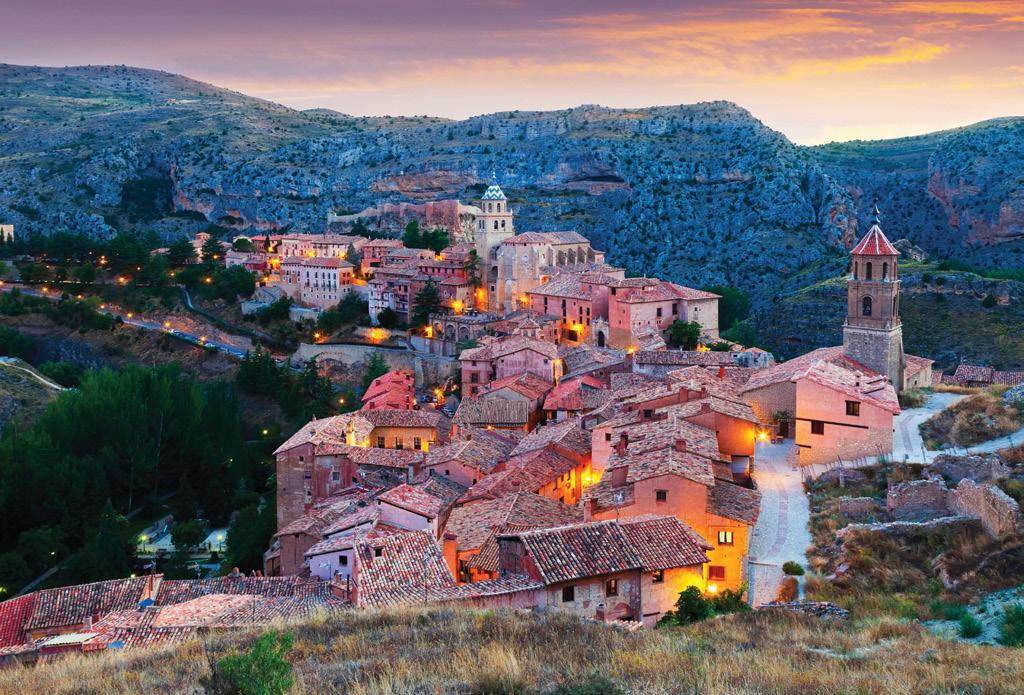
3 minute read
Francisco Mestre
PRESIDENT OF LOS PUEBLOS MÁS BONITOS DE ESPAÑA
CELEBRATING AND PRESERVING THE BEAUTY OF SPAIN’S VILLAGES
If you are enchanted by the beauty of Spain’s traditional villages, then you may already be familiar with Los Pueblos Más Bonitos de España – The Most Beautiful Villages in Spain. This select guide, which is also accessible online, provides information on each of the 105 villages that have managed to make the cut. This month, we bring you an interview with the President of the Association and one of its founding members: Francisco Mestre. WORDS MARISA CUTILLAS PHOTOGRAPHY COURTESY OF
THE PUEBLOS MÁS BONITOS DE ESPAÑA ASSOCIATION
Which villages can apply to be in the guide?
Applicants must have under 15,000 inhabitants and a certified architectural or natural heritage. They also have to fulfil 29 additional criteria, ranging from the care of green areas to cleanliness, the conservation of building facades, and vehicle control.
How many villages apply to be in the guide every year?
Around 20 to 30. However, very few are admitted, because we prefer quality over quantity.
Why did you establish your Association?
We wanted to give a push to villages that were becoming deserted. These villages had one big advantage – their architectural and natural heritage was better preserved than those with a high level of new construction. Tourism is a pillar of the Spanish economy and it is only logical that our villages should play a key role in this industry. In 1982, the Most Beautiful Villages in France Association was founded. When we created ours in 2010, five similar ones already existed in the world.
What benefits does being part of your guide bring to individual villages?
The benefits are enormous. Being in the guide allows them to survive off-peak seasons. They attract tourists all-yearround, which is vital for local businesses and employment. They don’t ‘collapse’ because
of over-crowding. We encourage villages to celebrate fiestas and other special events during offpeak seasons. The village of Nuevo Baztán in Madrid, has tripled its tourism figures in two years. Anento, another village in the community of Madrid, has built new rural homes and two restaurants to fulfil tourist demand. They have also constructed a parking space and with the monies they obtain from it, they are able to hire two cleaners who work throughout the year.
Which municipality has the largest number of villages in your guide?
Teruel. In the 1960s, 1970s and 1980s, its villages were abandoned so it was able to preserve its original architecture. Salamanca, Cantabria and Burgos are also home to many of Spain’s most beautiful villages. place. The French Association is equally rigorous. It recently expelled a village for building a large supermarket by its entrance. Our visits are time-consuming because we stay a minimum of two days to study the villages’ illumination by night. We also meet with the Mayor and discuss future plans and necessary improvements.
Do you think the guide will ever reach a maximum of villages?
I calculate that there will be a maximum of around 150, based on the experience of our French colleagues. Their guide has 165 villages after 40 years of existence.
What keeps you busy?
In addition to studying applications and paying visits, I also manage the Association. We are currently working on reaching international markets. Our guide is very well-known in Spain but we also wish to reach countries like Italy, France, the UK, and the U.S. Our website also involves a lot of work. We have over three million visits and our site has become a cornerstone of our Association.

i www.lospueblosmasbonitosdeespana.org
Do you travel frequently to each individual village?
Yes, we have to ensure that the villages applying for inclusion make the grade. Some applicants need to make a couple of changes before we admit them. We also suggest further improvements for those that are already accepted. Villages which are already in the guide are checked every five years or so, to make sure that no unacceptable changes have taken











